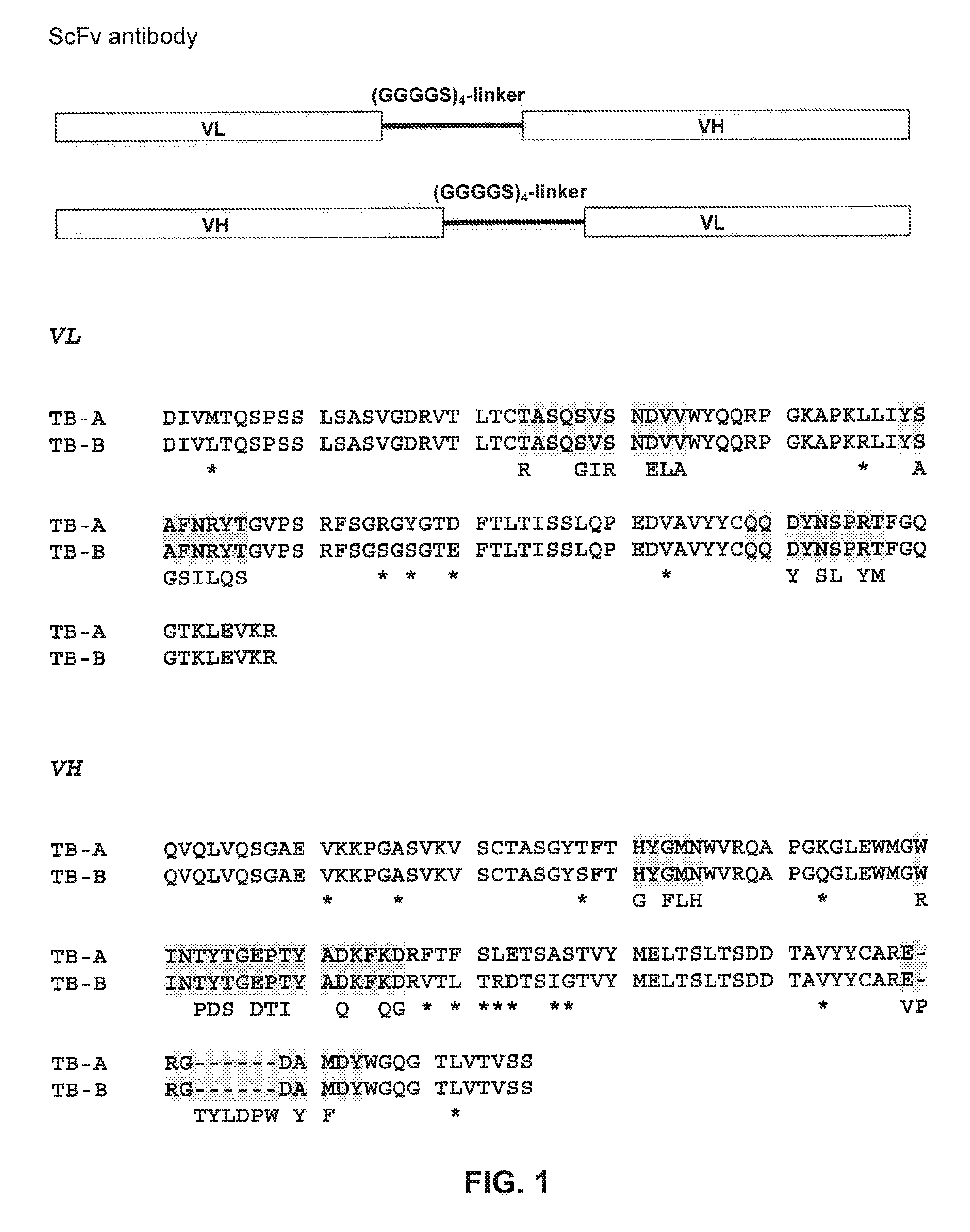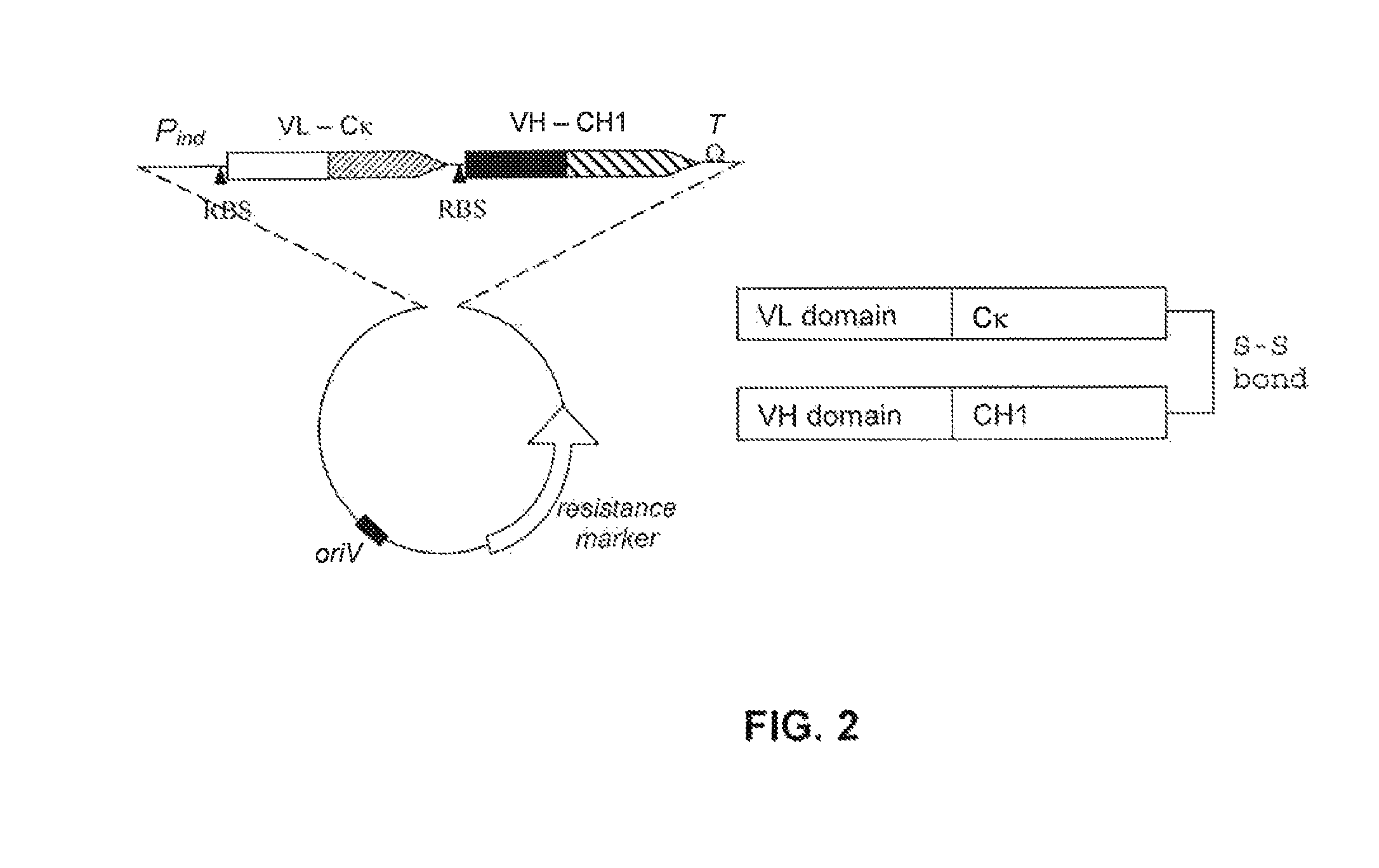Stable and soluble antibodies inhibiting TNFα
a technology of soluble antibodies and tnf, which is applied in the direction of fused cells, immunological disorders, drug compositions, etc., can solve the problems of limited intracellular expression of functional scfvs, increased frequency and severity of clinically manifested infections,
- Summary
- Abstract
- Description
- Claims
- Application Information
AI Technical Summary
Problems solved by technology
Method used
Image
Examples
experiment 1
[0172] Construction of scFv Antibodies
[0173]The starting material for the generation of humanised anti-human TNFα antibodies or antibody derivatives, such as single-chain fragments (scFv) or Fab fragments, was the murine monoclonal antibody Di62. The sequences of the variable region of the light chain and the heavy chain are disclosed in Döring et al. (1994, Mol. Immunol. 31:1059-1067). The properties of this monoclonal antibody are also discussed in the same publication. Briefly, Di62 specifically binds to human TNFα in a concentration-dependent manner. It is a high affinity antibody (Kd=0.4 nM) and can block TNFα binding to its receptor. In addition, Di62 inhibits human TNFα-induced cytotoxicity in mouse L929 cells.
[0174]Based on its published sequence Di62 was constructed in the form of a single-chain antibody derivative (scFv) in the orientation VL-linker-VH, in which the linker sequence is composed of four repeats of four glycine and one serine residue (Gly4Ser)4, (SEQ ID NO: 1...
experiment 2
[0197] Expression, Production and Stability of Humanised scFv or Fab Antibodies
[0198]Plasmids encoding TB-wt, its humanised derivatives, or Fab fragments were introduced into a suitable E. coli strain (e.g. JM83) for periplasmic expression. The scFv variants were also expressed as inclusion bodies, for example in the BL21 E. coli strain. Functional single-chain antibodies were obtained by refolding of inclusion bodies and subsequent purification by, for example, gel filtration.
[0199]The expression yields upon periplasmic expression of the scFvs ranged between 0.5 mg up to 12 mg per litre culture under standard laboratory cultivation conditions (dYT medium, with approx. 3 hours induction time at 30° C., shaking at 200 rpm) with conventional shaking flasks. In general, we observed that, as expected from our previous analysis of frameworks selected for stability and solubility (Auf der Maur, et al. (2004), Methods 34:215-224), the closer the sequence of a humanised derivative is to the...
experiment 3
[0204] Binding Features of Humanised Antibody Derivatives
[0205]The binding properties of all humanised scFv variants were tested in ELISA on recombinant human TNFα. The dissociation constants (Kd) for all variants lay within a range of 0.8 to more than 10,000 nM. There seems to exist a reverse correlation between the grade of homology to the human acceptor framework and the affinity of the respective binder (FIG. 4A). Nevertheless, some TB-A variants containing mutations towards the TB-B sequence show affinity levels towards human TNFα that are comparable to that of TB-A. FIG. 4B shows two expression yield-improved derivatives of TB-A (compare FIG. 3A) that exhibit similar affinities as TB-A when compared in ELISA.
[0206]TB-A represents a good compromise between the apparent trade-off of expression yield and affinity. In terms of affinity, no significant difference between the single-chain and the Fab fragment format of TB-A was detectable (data not shown).
[0207]The affinity for TNFα...
PUM
| Property | Measurement | Unit |
|---|---|---|
| pH | aaaaa | aaaaa |
| temperature | aaaaa | aaaaa |
| concentration | aaaaa | aaaaa |
Abstract
Description
Claims
Application Information
 Login to View More
Login to View More - R&D
- Intellectual Property
- Life Sciences
- Materials
- Tech Scout
- Unparalleled Data Quality
- Higher Quality Content
- 60% Fewer Hallucinations
Browse by: Latest US Patents, China's latest patents, Technical Efficacy Thesaurus, Application Domain, Technology Topic, Popular Technical Reports.
© 2025 PatSnap. All rights reserved.Legal|Privacy policy|Modern Slavery Act Transparency Statement|Sitemap|About US| Contact US: help@patsnap.com



